Offshore wind still has problems, however. The power output is simply not as predictable as that from fossil fuels – the output of a wind turbine is highly dependent on complex weather patterns that are notoriously difficult to accurately forecast.
Predictability is important for efficiently managing power supply and demand. This is one reason why engineers are exploring other emerging offshore technologies to capture energy from the ocean itself, which is highly predictable. Patent filing data shows how much ocean energy is being explored, with a seven-fold increase in such filings in the last 20 years.
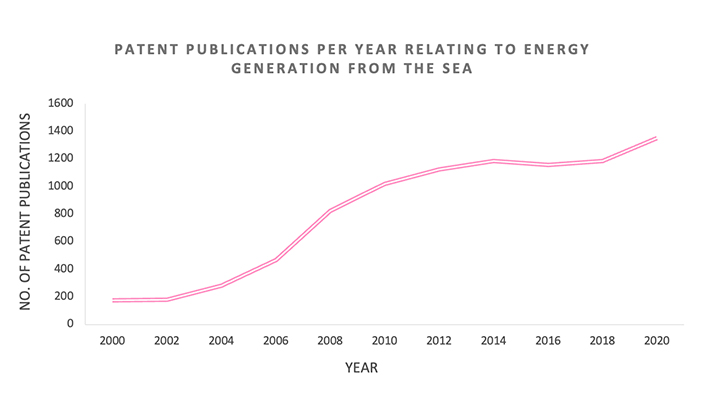
No one single solution
Although ocean energy can be captured from the tides, thermal gradients and even differences in salinity, perhaps the most direct way to capture energy from the ocean is from the waves.
Unlike wind power, however, there is no clear winning design for capturing energy from waves. Instead, we see considerable diversity in the technologies being explored by engineers.
In its current state, the wave energy industry is a great example of how, given the same problem, engineers can arrive at widely different solutions, each with their own set of benefits and drawbacks.
Here are five of the most common wave energy converter (WEC) types currently being developed.
Point absorber
The most common type of wave energy converter is the point absorber. The current prevalence of these devices is likely due to their simplicity – in effect, a point absorber is a buoy that is tethered to a fixed base. As the buoy moves up and down in the water due to the heave motion of the waves, it moves towards and away from the base. The reciprocating movement of the tether resulting from this motion can be harnessed to generate electricity.
The PowerBuoy from Ocean Power Technologies is a great example of this type of device, although instead of a fixed base it uses a submerged spar that remains mostly stationary in the waves, while the buoy moves towards and away from the spar.
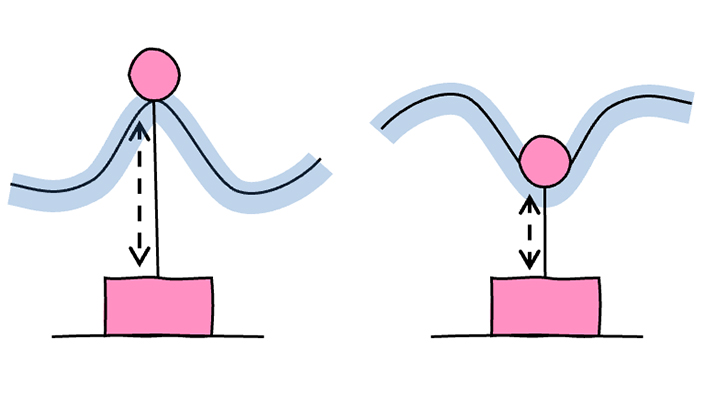
Submerged pressure differential
One issue with a point absorber is that the buoy is at the surface, meaning it is exposed to potentially destructive weather. To avoid this, Bombora’s 1.5MW mWave, for example, operates below the surface of the water. The mWave is an example of a submerged pressure differential device, which exploits changes in hydrostatic pressure (resulting from the rise and fall of waves) to capture energy. In the case of the mWave, the changes in hydrostatic pressure inflate and deflate a rubber membrane that drives air from an enclosed space and through a turbine.
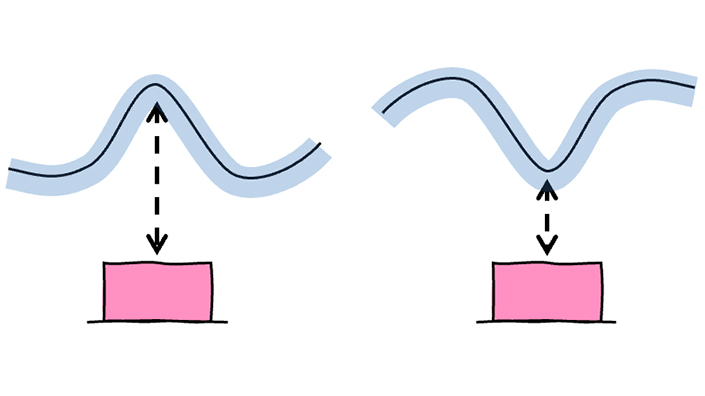
Oscillating water column (OWC)
Like Bombora’s mWave, OceanEnergy’s OE 35 buoy and Wave Swell Energy’s Uniwave use the heave motion of the waves to drive air through a turbine. Instead of a membrane, the OE 35 and Uniwave (which are examples of oscillating water converters) include an open-ended chamber that captures a column of water at the surface. As the water level in the chamber rises and falls with the waves, air is moved into and out of the chamber to drive a turbine.
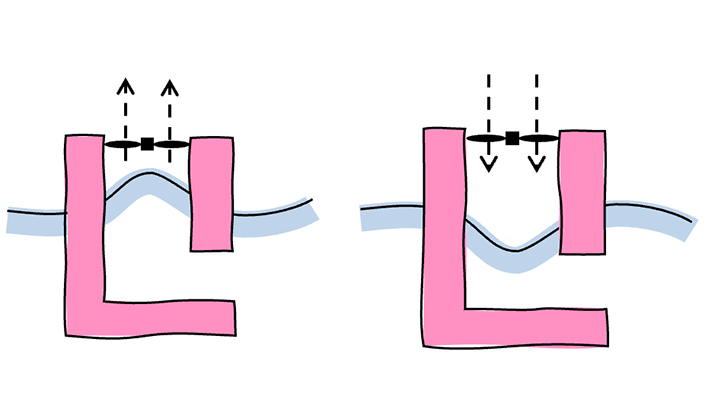
Surge converter
Of course, it is not only the heave motion of waves that can be exploited. Waves in the ocean do not just move up and down, but instead follow an elliptical path.
Surge converters (named after the backwards/forward motion of a vessel) generate electricity in response to the forward/backwards component of a wave’s motion. Typically, surge converters such as AW-Energy’s WaveRoller involve a panel connected to the seabed by a hinge. The panel pivots back and forth in response to wave motion, and that movement is used to pump a fluid, which ultimately drives a generator to generate electricity.
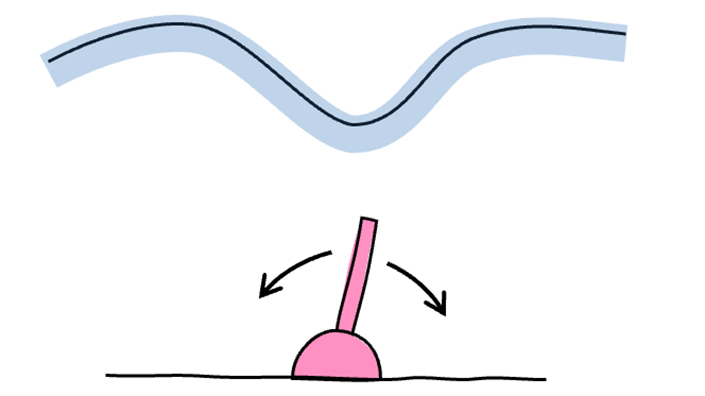
Rotating mass
Typically, when designing a vessel you want to ensure some level of stability. The Wello penguin is intentionally designed to be unstable.
The unique shape of the device means that as it is passed by waves it gyrates in a circular motion. This motion rotates a mass held within the hull of the device, and that rotation can be used to generate electricity.
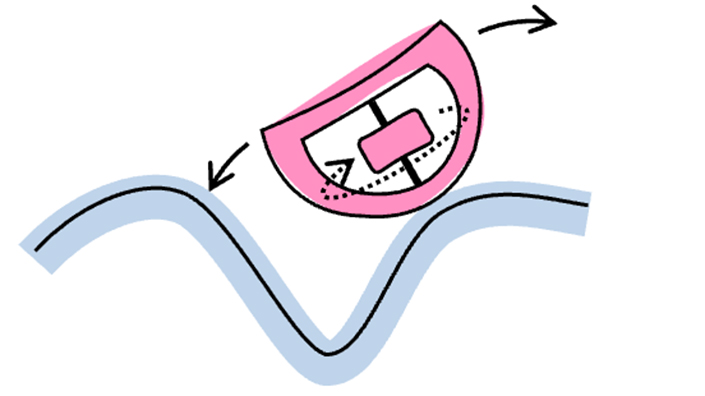
What next?
It is estimated that, at least theoretically, wave energy could provide 29,500 TWh per year (the world’s total electricity consumption in 2019 was about 23,000 TWh).
Even if only a fraction of that output is practically attainable there is clearly serious potential for wave energy to provide a significant contribution to the world’s energy supply.
So why has wave energy capture not yet taken off? One reason is simply that the ocean is a very harsh environment – it is difficult and expensive to install and then maintain a device in the ocean, especially one that includes components that must continuously move or flex.
For the same reason, it is challenging to design and implement a wave energy capture device that has an operating life sufficiently long enough to justify the initial capital expenditure. The lack of a ‘favourite’ design is also problematic, because efforts and resources are spread across a wide range of very different technologies, rather than being focussed on a particular technology.
One source of assistance could come from the recent rapid rise in offshore wind. As a source of predictable energy, wave energy provides a desirable companion to wind power. Hybrid systems have been proposed, in which wave energy converters are used to even out the power output of an offshore wind farm, ensuring a minimum baseload is met in periods of low wind. By sharing infrastructure, such hybrid systems would lower the effective cost of installing and maintaining an array of wave energy converters.
With such tantalising potential energy available, we expect to see the number of patent filings for wave energy converter systems to surge again over the coming years.
Want the best engineering stories delivered straight to your inbox? The Professional Engineering newsletter gives you vital updates on the most cutting-edge engineering and exciting new job opportunities. To sign up, click here.
Content published by Professional Engineering does not necessarily represent the views of the Institution of Mechanical Engineers.